How to Budget for a Home Renovation
When it comes to home renovations, sticking to a budget can be challenging. Here are our tips on how to budget for a renovation to help you get started.

Home renovations can be a great way to update your home and add value to your property. However, sticking to a budget can be challenging whether you're renovating your entire home or a single room. Unexpected issues and accidents can increase costs, and the additional work can easily blow your budget.
When renovating, it is essential to plan as much as possible and have contingencies for unexpected outcomes. You need to start by creating a feasible and realistic budget for your project. In this post, we share tips and know-how to help you with this process.
Understand your costs
The cost of renovating or remodeling your home is directly proportional to its square footage. For instance, an average 1,000-square-foot home renovation can set you back around $ 19,000. However, if you're considering a larger project for a 3,000 or 4,000-square-foot home, be prepared for a budget of $87,500 or more.
These figures are an average renovation estimate of what it costs to renovate an entire home. However, remember that older homes cost more to renovate than newer homes. Faulty wiring, plumbing, or structural issues might need addressing and may be costly. If anything is not up to code, it might require significant work to update.
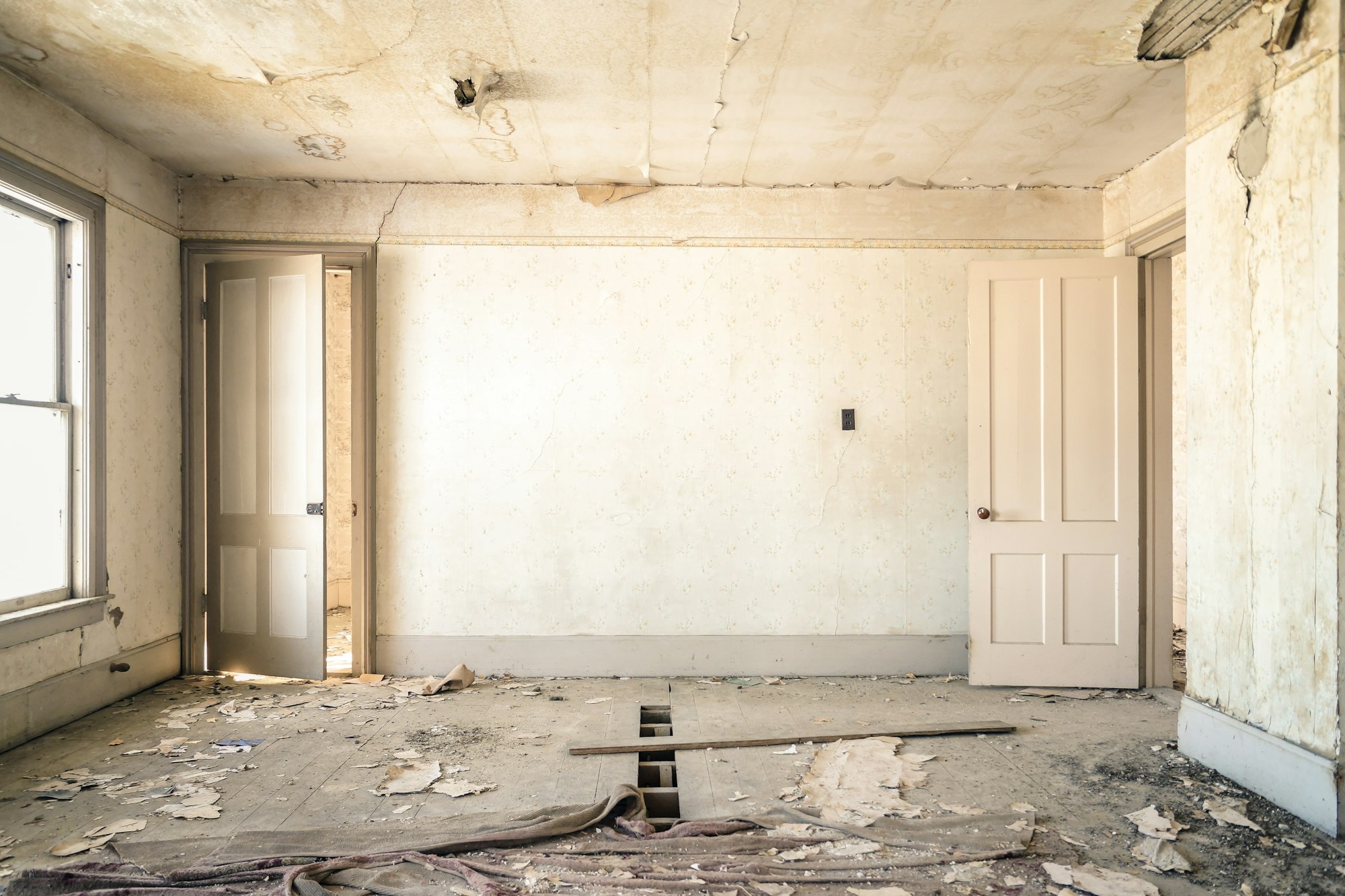
The costs can vary significantly depending on the condition and size of the room you're renovating. A kitchen reno might cost between $4,000 and $80,000, while a bathroom renovation can run between $2,500 and $25,000. The type of finishings and materials you choose will also factor in the cost of the renovation.

As renovation costs can consume a big chunk of savings, most people prioritize their renovations based on necessity. Renovating one room at a time allows you to keep the projects manageable while keeping costs down. Start by deciding which room needs the most work, and then you can prioritize the rest of the house. This option is a great way to stay on track and keep the projects from ballooning out of control.
Set a budget
When doing more extensive work, factor in the value the renovation will bring to your home. Your budget will come down to the type of work you want to do, what rooms and the materials you plan on using. If you plan to hire contractors, you must factor in labor costs.

When calculating figures, the rule of thumb is not to spend more than 5-10% of the total value of your property on any renovation. For example, if your home is worth $300,000, you should allocate $30,000 for renovations. Spending more than that doesn't guarantee a good return on investment, especially if the market takes a downturn and the rates go up.
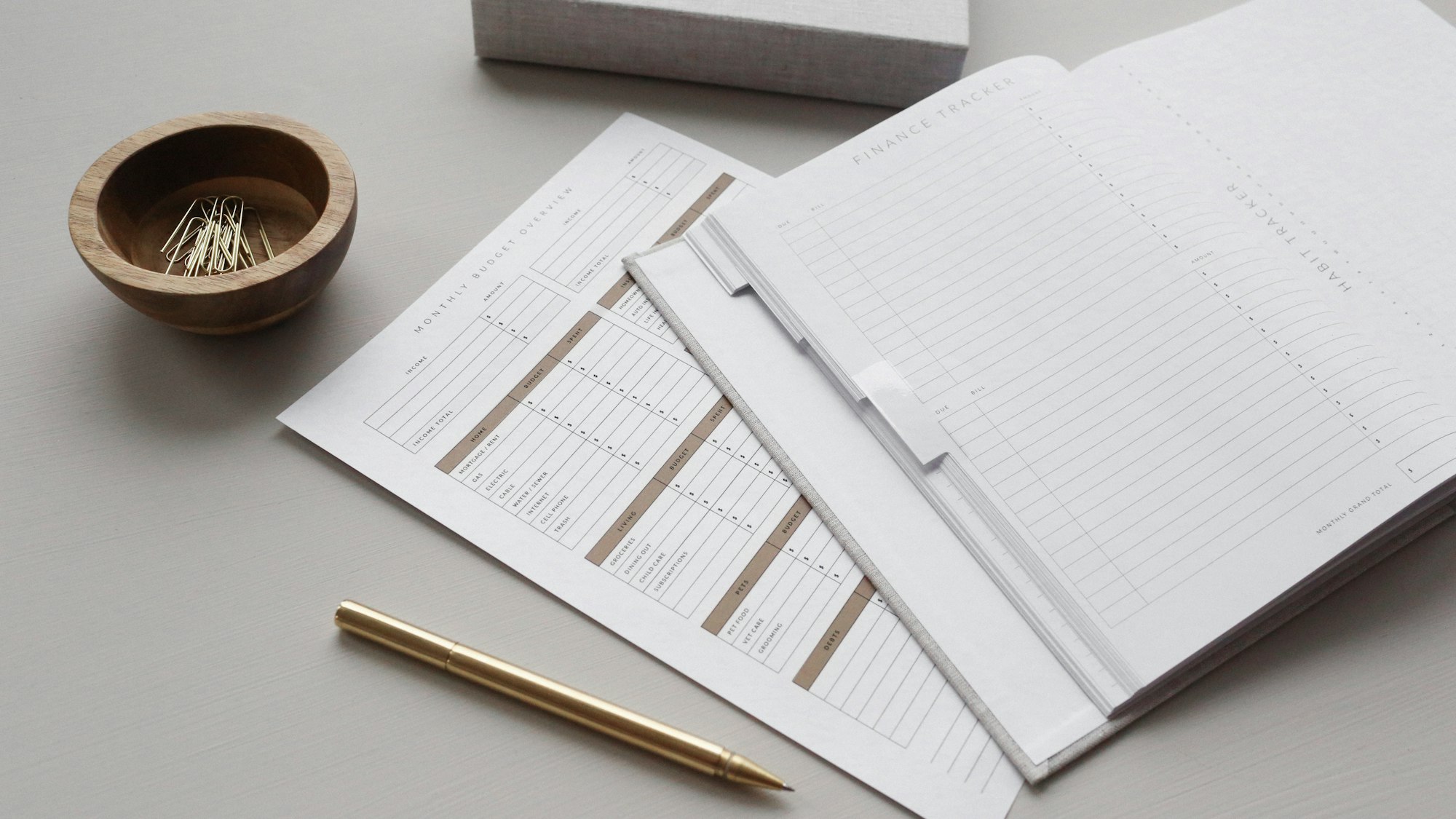
Opting for a more extensive renovation project, whether for aesthetic value or necessity, will likely add more value to your home. While you may be tempted by the ROI, it's important to consider where the money for the renovation is coming from. A landscaping project might increase your property's value, but if you have no money to pay for it, it won't matter.

Whether using your savings, taking out a loan or borrowing from friends and family, you must create a detailed cost breakdown. An experienced contractor can help you create a realistic budget, even if you plan to do the work yourself.
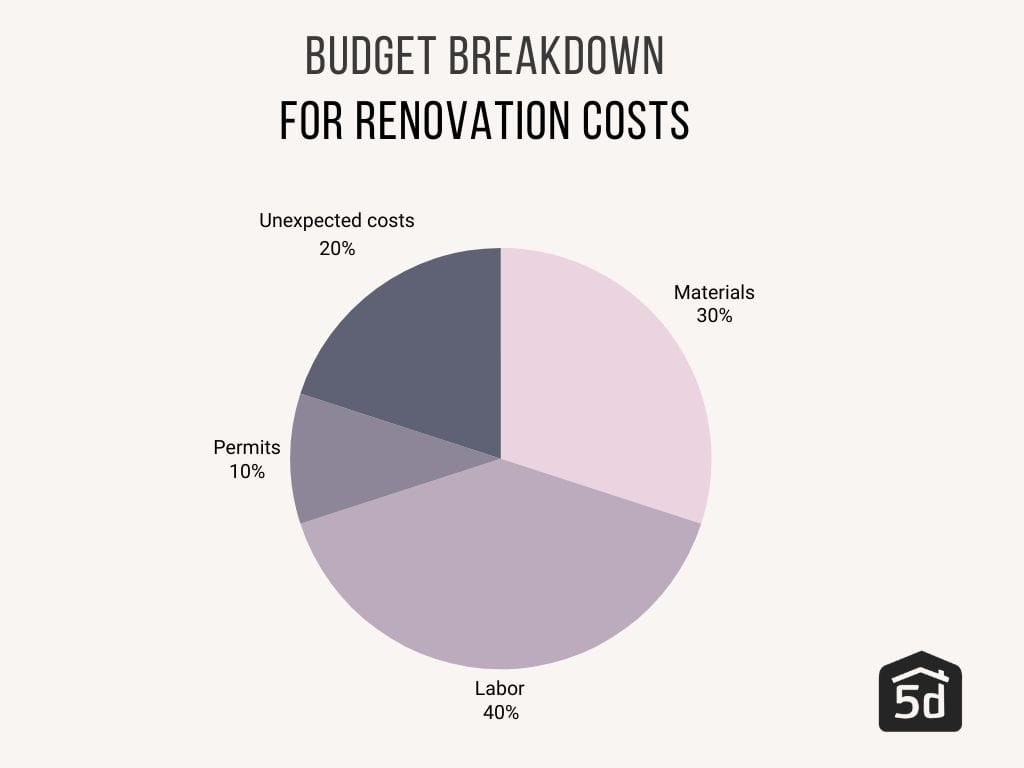
When you have your finances in order, it is always a great idea to set aside 10-20% for unexpected expenses, as accidents do (and most likely will) happen. With all that in hand, you can start planning and implementing the budget.
Set your priorities
Now that you know what you can spend, you can create a detailed plan and precise budget. The first step is to prioritize your renovation needs. During a renovation, the easiest way to stay on budget is to determine which features and materials are necessary rather than what is a "nice-to-have." You can easily create a list and prioritize what needs to be done.
Before you start the project, consider what to do first. For example, if you renovate your bathroom from scratch, you'll need to factor in the cost of pipes and plumbing. These materials are necessary, whereas the expensive, top-of-the-line bathroom floor tile is a "nice-to-have," especially if you can achieve the same effect with a cheaper alternative.

Doing things correctly from the start will save you time, money, and frustration in the long run. To understand your renovation project's priorities, create a checklist to help guide you.
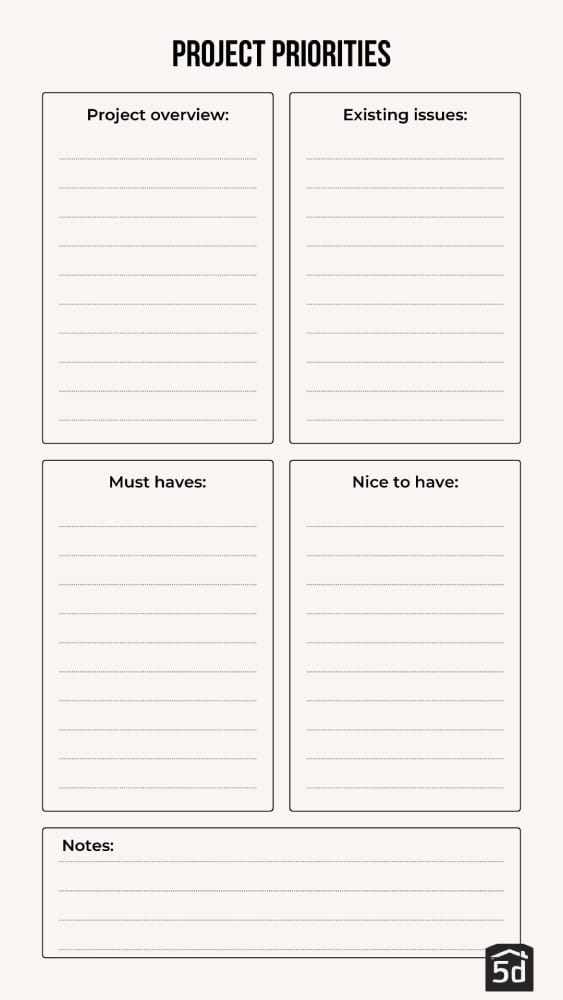
Once you have answered these and listed the priorities for your project, you can begin to plan and implement it. Trust us, setting your priorities and realistic budget will put you one step ahead.
Create a plan
After setting your priorities and defining your goals for the renovation, you should create a detailed plan that includes the expected costs of every item. By doing so, you'll create a highly detailed cost outline and (hopefully) keep on track and stay on budget. If hiring contractors, communicate the budget and line items with them to ensure everyone understands the costs.

How you create the plan is entirely up to you, but we advise providing as much detail as possible. You can create a spreadsheet, a Word document, or any form of structured document that allows you to include each part of the project, each need, and the estimated cost for both the materials and the labor—the labor cost being discussed with your contractor, should you be using one.

When developing this plan, it is essential to understand how renovations usually work. While you can get labor costs from contractors, plumbers, etc., these costs are only estimates. As we have mentioned, it's important to set aside some money to allow for a margin of error. In general, labor costs account for around 25% - 40% of an entire project's budget.
Remember to include all materials and fixtures when making your list. If you're renovating a bathroom, that includes everything from light fixtures, sinks, tubs, showers, tiles, toilets, paint and pipes to cabinets, mirrors and flooring. Make sure to add any taxes and shipping fees to your costs should they apply.
Along with the fixtures, you should include any appliances that may be needed, such as ovens and fridges in a kitchen renovation and any shipping, tax and installation costs. You should also include the cost of removing old appliances if applicable.
Pay attention to the small items that can often add up. Things like paint brushes, drop cloth and cleaning products, tools, tapes, and such can often easily sneak up on you in terms of cost. The same goes for any disposal fees and garbage removal.

While making your plan, remember to include your living costs, especially if you need to stay elsewhere while the renovations are underway. These costs can consist of food deliveries and takeout, accommodations or transportation costs, which can add up fast. Your plan should include these things so that everything is above board and you don't run into financial trouble midway through a project.
While labor costs account for a large chunk of your budget, if your plan is thorough and you have accounted for everything, then you may solely focus your conversations with a contractor on their labor costs and timing. Again, we emphasize trying to remember to set aside the correct percentage of money should these "estimates" and costs not be as accurate as you thought for any number of reasons.
Shop around + get quotes
Now that you have created a detailed plan and included all your costs, it's time to choose the perfect contractor - if you decide to hire one. Always make sure to read reviews and do your research. You can look online or get referrals from friends and family. Make sure to ask for references from past clients and get written estimates.
While you may have discussed the project with one or more contractors and got estimates on labor costs, it is imperative to shop around. Getting different estimates will give you a better idea of what other companies charge and help you find someone who is the right fit. This will help you find someone who can complete your project on time and within budget.
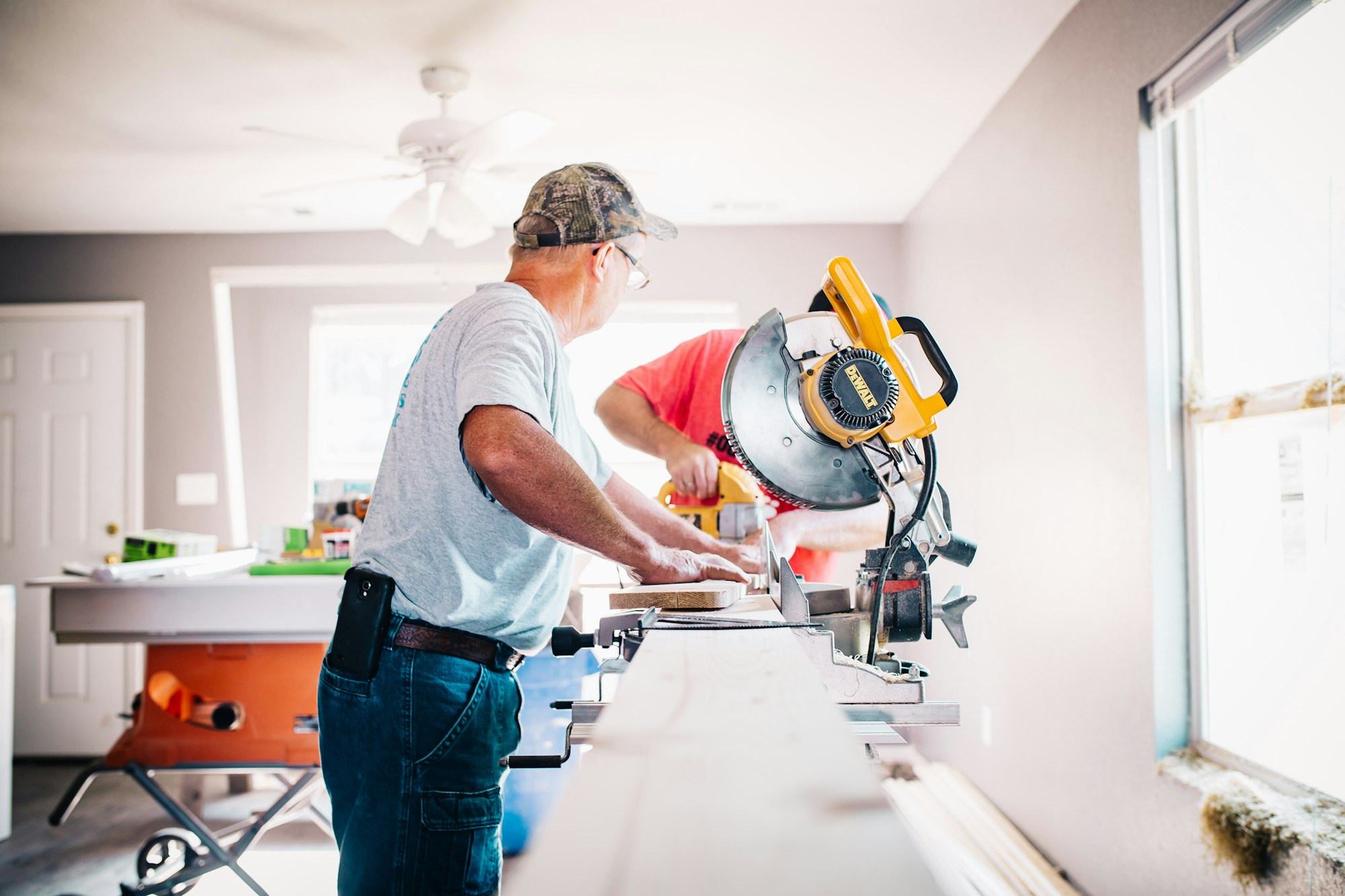
When choosing a contractor, you should never forget to:
- Interview and check references.
- Make sure you're clear on what you want from your project and your budget - sticking to your budget and being adamant that you do not wish to extend beyond will help your contractor understand how they can help.
- Ensure your needs and priorities are understood.
- Discuss the prospect of any unforeseen issues or expenses and how these should be dealt with.
Keep in mind that while the cheapest quote might sound the best, it's not always the best option. If a contractor's quote is significantly lower than other estimates, it could be a red flag. Inexperienced contractors or those who cut corners can lead to more issues and higher costs, and you should probably look for someone else.
If you find yourself in a position where no contractor can work within your budget, you should get back to your list of wants and nice to have. This step will help you prioritize what you need and cut down costs by eliminating things that are not a necessity.
After choosing your contractor, have them look over your plan and budget to relay whether you have missed anything. Use this feedback and everything you have gained to factor into your final plan before starting the project to ensure everything aligns with the budget. Once everything lines up, it's time to start the actual work.
Cost saving tips
No matter how big or small your renovation project is, there are ways to cut costs to keep you within your budget. Consider all the elements and decide where you can save and which parts make sense to pay. Do these estimations wisely, as saving money in the short term could cause problems in the future. Here are some ways you can reduce your costs when renovating:
- DIY - If you have the right skills and are willing to get your hands dirty, doing it yourself is a great cost-cutting alternative. Make sure that you only attempt the jobs you know how to do. Removing old cabinets is much easier than trying electrical work without experience.
- Buy it yourself - Another great way to save costs during a renovation is to order certain things yourself rather than tasking the job to a contractor. Ordering fixtures, paint, appliances, etc., will save you costs as a contractor may charge extra for doing the shopping for you.

- Painting - Hiring a professional to paint your house can take the stress and work off your shoulders. Painting is relatively easy, and once you have the right paint color, it can be done fairly quickly. By taking this on yourself, you can deduct a small but substantial amount from your overall costs.
- Recycle, reuse, relove - A great way to save costs when furnishing your newly remodeled home or room is to buy it used. Second-hand furniture is much more affordable than brand-new versions, and you can often find brand names for less. Visit your local flea markets and vintage stores, or shop online for unique items, especially if you want to create a unique space.
Conclusion
While a renovation may seem daunting, we hope reading this post has helped you realize all the elements you should consider before starting your next project. Researching and planning before you start can help you keep on track and budget.
As long as you have a clear vision and a plan to follow, there is no reason your renovation shouldn't be successful. Always expect the unexpected and do your research on everything. Budget wisely and be realistic. By following our tips, you will be one step closer to budgeting for your renovation and, eventually, one step closer to completing it.
